for incipit
illustrazioni ispirate al libro “Lezioni Americane” di Italo Calvino
Illustrations inspired by Italo Calvino’s book “Six Memos for the Next Millennium”

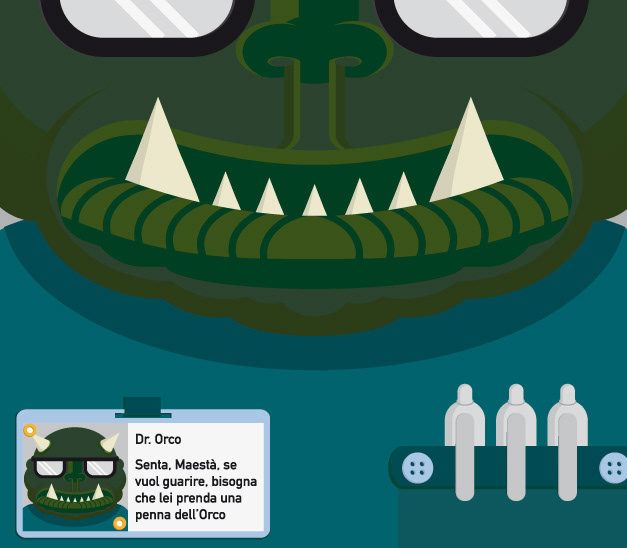
• Senta, Maestà, se vuol guarire, bisogna che lei prenda una penna dell’Orco
• Majesty, if you want to get well, you’ll have to obtain one of the ogre’s feathers
<< Nel mio lavoro di trascrizione delle fiabe italiane dalle registrazioni degli studiosi di folklore del secolo scorso, provavo un particolare piacere quando il testo originale era molto laconico e dovevo cercare di raccontarlo rispettandone la concisione e cercando di trarre da essa il massimo d’efficacia narrativa e di suggestione poetica. Per esempio: Un Re s’ammalò. Vennero i medici e gli dissero: “Senta, Maestà, se vuol guarire, bisogna che lei prenda una penna dell’Orco. È un rimedio difficile, perché l’Orco tutti i cristiani che vede se li mangia”. Il Re lo disse a tutti ma nessuno ci voleva andare. Lo chiese a un suo sottoposto, molto fedele e coraggioso, e questi disse: “Andrò”. Gli insegnarono la strada: “In cima a un monte, ci sono sette buche: in una delle sette, ci sta l’Orco”. L’uomo andò e lo prese il buio per la strada. Si fermò in una locanda... (Fiabe italiane, 57). Nulla è detto di quale malattia soffra il re, di come mai un orco possa avere delle penne, di come siano fatte queste buche. Ma tutto ciò che è nominato ha una funzione necessaria nell’intreccio; la prima caratteristica del folktale è l’economia espressiva; le peripezie più straordinarie sono raccontate tenendo conto solo dell’essenziale. >>
<< If during a certain period of my career as a writer I was attracted by folktales and fairytales, this was not the result of loyalty to an ethnic tradition (seeing that my roots are planted in an entirely modern and cosmopolitan Italy), nor the result of nostalgia for things I read as a child (in my family, a child could read only educational books, particularly those with some scientific basis). It was rather because of my interest in style and structure, in the economy, rhythm, and hard logic with which they are told. In working on my transcription of Italian folktalcs as recorded by scholars of the last century, I found most enjoyment when the original text was extremely laconic. This I tried to convey, respecting the conciseness and at the same time trying to obtain the greatest possible narrative force. See, for instance, number 57 in Italian Folktaks (Fiabe gallant): A king fell ill and was told by his doctors, “Majesty, if you want to get well, you’ll have to obtain one of the ogre’s feathers. That will not be easy, since the ogre eats every human he sees” The king passed the word on to everybody, but no one was willing to go to the ogre. Then he asked one of his most loyal and courageous attendants, who said, “I will go.” The man was shown the road and told, “On a mountaintop are seven caves, in one of which lives the ogre.” The man set out and walked until dark, when he stopped at an inn... Not a word is said about what illness the king was suffering from, or why on earth an ogre should have feathers, or what those caves were like. But everything mentioned has a necessary function in the plot. The very first characteristic of a folktale is economy of expression. The most outlandish adventures are recounted with an eye fixed on the bare essentials. >>


• La rapidità e la concisione dello stile piace perché presenta all’anima una folla d’idee simultanee
• Speed and conciseness of style please us because they present the mind with a rush of ideas that are simultaneous
<< La rapidità e la concisione dello stile piace perché presenta all’anima una folla d’idee simultanee, così rapidamente succedentisi, che paiono simultanee, e fanno ondeggiar l’anima in una tale abbondanza di pensieri, od’immagini e sensazioni spirituali, ch’ella o non è capace di abbracciarle tutte, e pienamente ciascuna, o non ha tempo direstare in ozio, e priva di sensazioni. >>
<< Speed and conciseness of style please us because they present the mind with a rush of ideas that are simultaneous, or that follow each other so quickly they seem simultaneous, and set the mind afloat on such an abundance of thoughts or images or spiritual feelings that either it cannot embrace them all, each one hilly, or it has no time to be idle and empty of feelings. >>
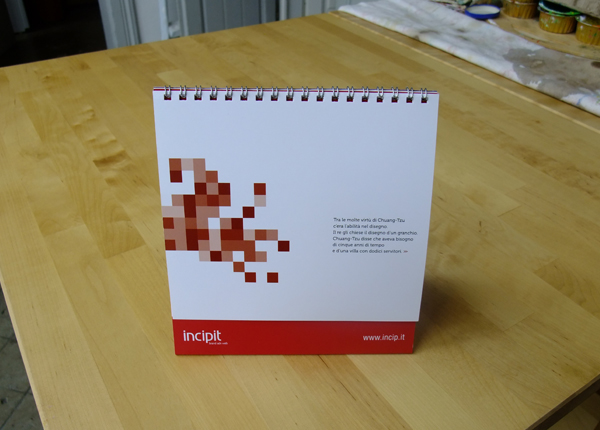

• Tra le molte virtù di Chuang-Tzu c’era l’abilità nel disegno. Il regli chiese il disegno d’un granchio. Chuang-Tzu disse che avevabisogno di cinque anni di tempo e d’una villa con dodici servitori.
• Among Chuan-tzu’s many skills, he was an expert draftsman. The king asked him to draw a crab. Chuang-tzu replied that he needed five years, a country house, and twelve servants.
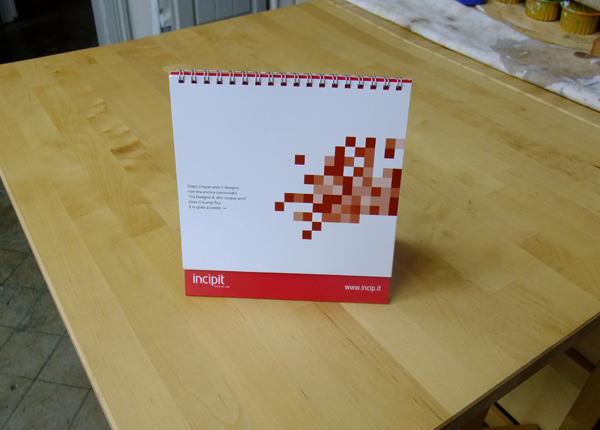
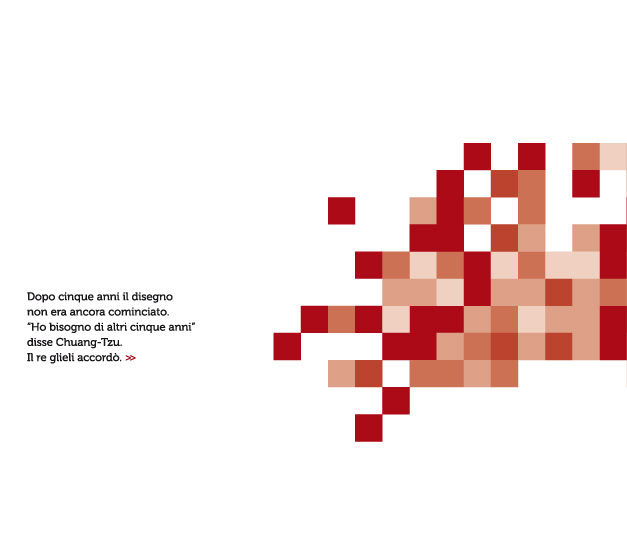
• Dopo cinque anni il disegno non era ancora cominciato.”Ho bisogno di altri cinque anni” disse Chuang-Tzu. Il re glieliaccordò.
• Five years later the drawing was still not begun. “I need another five years,” said Chuang-tzu. The king granted them.

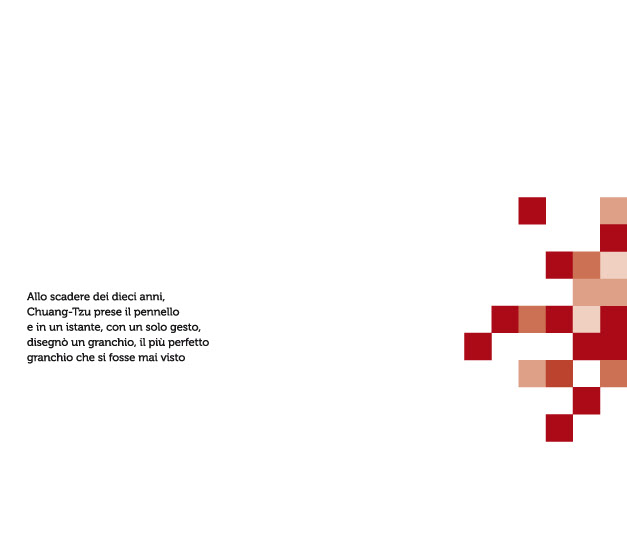
• Allo scadere dei dieci anni, Chuang-Tzu prese il pennello e in un istante, con un solo gesto, disegnò un granchio,il più perfetto granchio che si fosse mai visto.
• At the end of these ten years, Chuang-tzu took up his brush and, in an instant, with a single stroke, he drew a crab, the most perfect crab ever seen.
unprinted
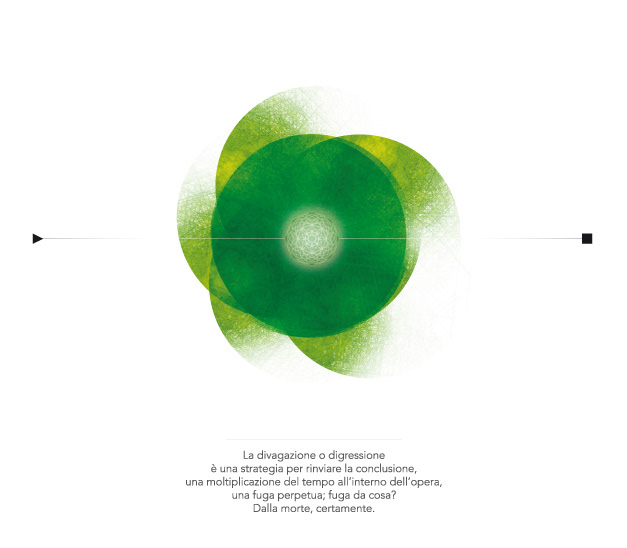
• La divagazione o digressione è una strategia per rinviare la conclusione, una moltiplicazione del tempo all’interno dell’opera, una fuga perpetua; fuga da che cosa? Dalla morte.
• The digression is a strategy for putting off the ending, a multi-plying of time within the work, a perpetual evasion or flight. Flight from what? From death
<< La divagazione o digressione è una strategia per rinviare la conclusione, una moltiplicazione del tempo all’interno dell’opera, una fuga perpetua; fuga da che cosa?Dalla morte, certamente, dice in una sua introduzione al TristramShandy uno scrittore italiano, Carlo Levi, che pochiimmaginerebbero come un ammiratore di Sterne, mentre invece ilsuo segreto era proprio quello di portare uno spirito divagante eil senso d’un tempo illimitato anche nell’osservazione deiproblemi sociali. >>
<< The digression is a strategy for putting off the ending, a multiplying of time within the work, a perpetual evasion or flight. Flight from what? From death, of course, says Carlo Levi, in an introduction he wrote to an Italian edition of Tristram Shandy. Few people would imagine Levi to be an admirer of Sterne, but actually his own secret lay precisely in bringing a spirit of digression and a feeling of unlimited time even to the observation of social problems. >>


